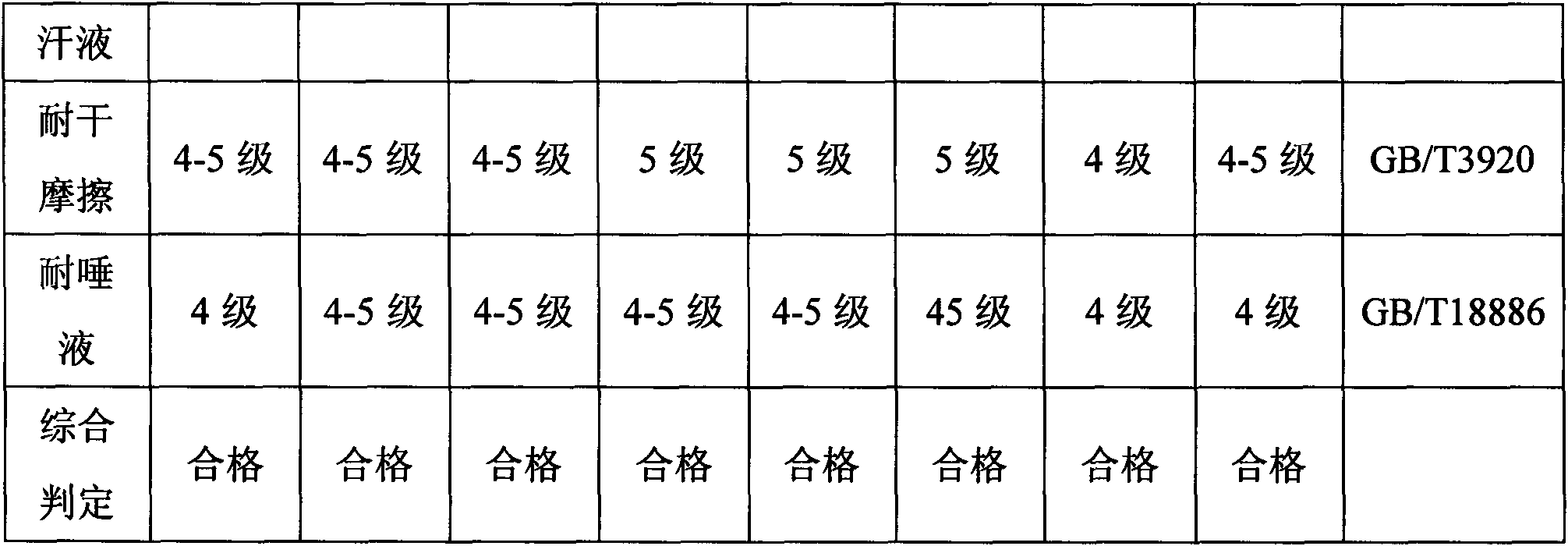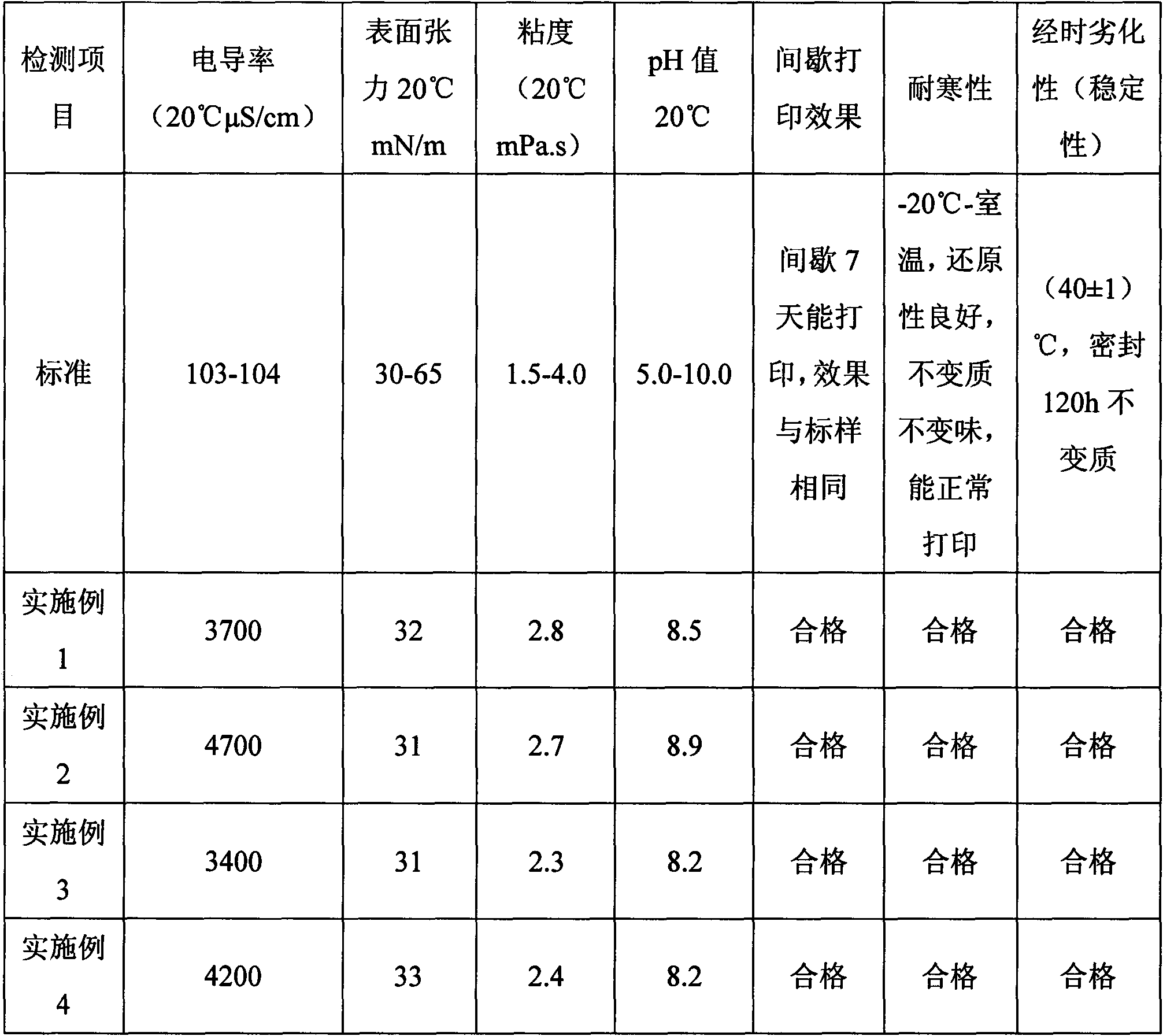Textile inkjet printing acid dye ink and production method thereof
A technology of acid dyes and inkjet printing, which is applied in textiles and papermaking, dyeing methods, inks, etc. It can solve the problems of easy hydrolysis or alcoholysis, inability to store for a long time, and failure to meet printing performance, etc., and achieve high rubbing fastness, The effect of strong quality stability
- Summary
- Abstract
- Description
- Claims
- Application Information
AI Technical Summary
Problems solved by technology
Method used
Image
Examples
Embodiment 1
[0029] Include the following components by weight percentage: C.I. Acid Dye Black 168 6%, C.I. Acid Dye Black 26 2%, Polyvinylpyrrolidone 1%, Diethylene Glycol 15%, Alkoxylated Alcohol EH-6 0.3%, Diethyl 3% glycol ether, 0.2% monoethanolamine, 0.5% 2-methyl-4-isothiazolin-3-one, and the rest is deionized water.
[0030] The above components were fully stirred for 2 hours at a temperature of 45°C and a rotational speed of 150 rpm to obtain a mixed solution. The mixed solution was cooled to room temperature through a cooler, and the cooled mixed solution was sequentially passed through a pore size of 0.45 μm and The acid dye inkjet ink for textile inkjet printing can be prepared by filtering through a microporous filter of 0.20 μm.
Embodiment 2
[0032] The following components are included in terms of weight percentage: C.I. Acid Dye Blue 227 1%, C.I. Acid Dye Blue 229 8%, Polyethylene Glycol 6%, 1,5-Pentanediol 12%, Alkoxylated Alcohol EH-6 1.0 %, triethylene glycol ethyl ether 3%, diethanolamine 0.2%, 2-methyl-4-isothiazolin-3-one 0.5%, and the rest is deionized water.
[0033] The above components were fully stirred for 2 hours at a temperature of 40°C and a rotational speed of 220 rpm to obtain a mixed solution. The mixed solution was cooled to room temperature through a cooler, and the cooled mixed solution was sequentially passed through a pore size of 0.45 μm and The acid dye inkjet ink for textile inkjet printing can be prepared by filtering through a microporous filter of 0.20 μm.
Embodiment 3
[0035] According to the weight percentage, it includes the following components: C.I. Acid Dye Red 52 0.5%, C.I. Acid Dye Red 249 8%, 1,2,3-Glycerol 10%, 4-Butyrolactam 10%, Alkoxylated Alcohol EH -6 0.8%, propylene glycol methyl ether 1%, triethanolamine 0.7%, 2-methyl-4-isothiazolin-3-one 0.2%, and the rest is deionized water.
[0036] The above components were fully stirred for 2 hours at a temperature of 60°C and a rotational speed of 160 rpm to obtain a mixed solution. The mixed solution was cooled to room temperature through a cooler, and the cooled mixed solution was sequentially passed through a pore size of 0.45 μm and The acid dye inkjet ink for textile inkjet printing can be prepared by filtering through a microporous filter of 0.20 μm.
PUM
 Login to View More
Login to View More Abstract
Description
Claims
Application Information
 Login to View More
Login to View More - R&D
- Intellectual Property
- Life Sciences
- Materials
- Tech Scout
- Unparalleled Data Quality
- Higher Quality Content
- 60% Fewer Hallucinations
Browse by: Latest US Patents, China's latest patents, Technical Efficacy Thesaurus, Application Domain, Technology Topic, Popular Technical Reports.
© 2025 PatSnap. All rights reserved.Legal|Privacy policy|Modern Slavery Act Transparency Statement|Sitemap|About US| Contact US: help@patsnap.com



